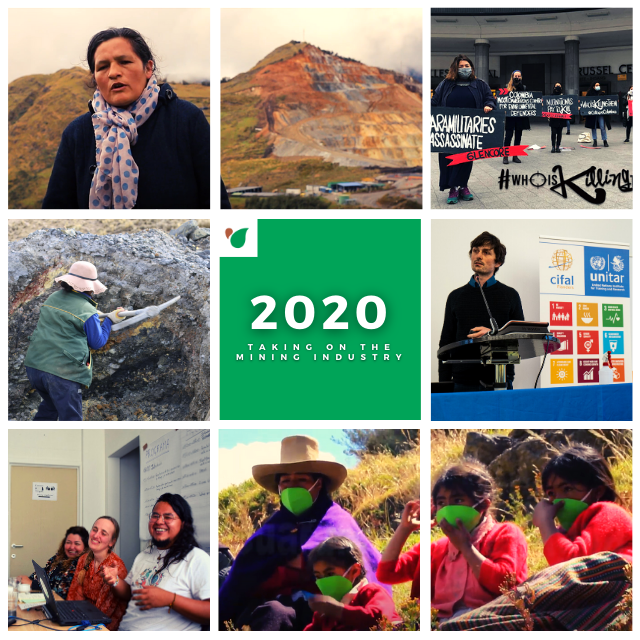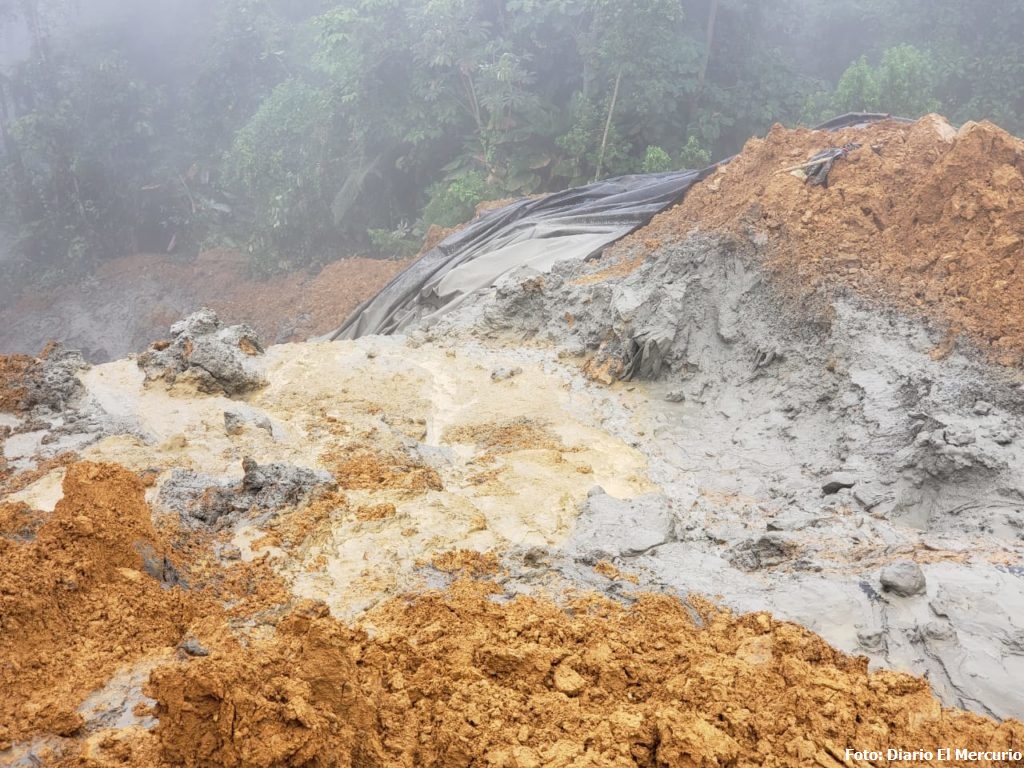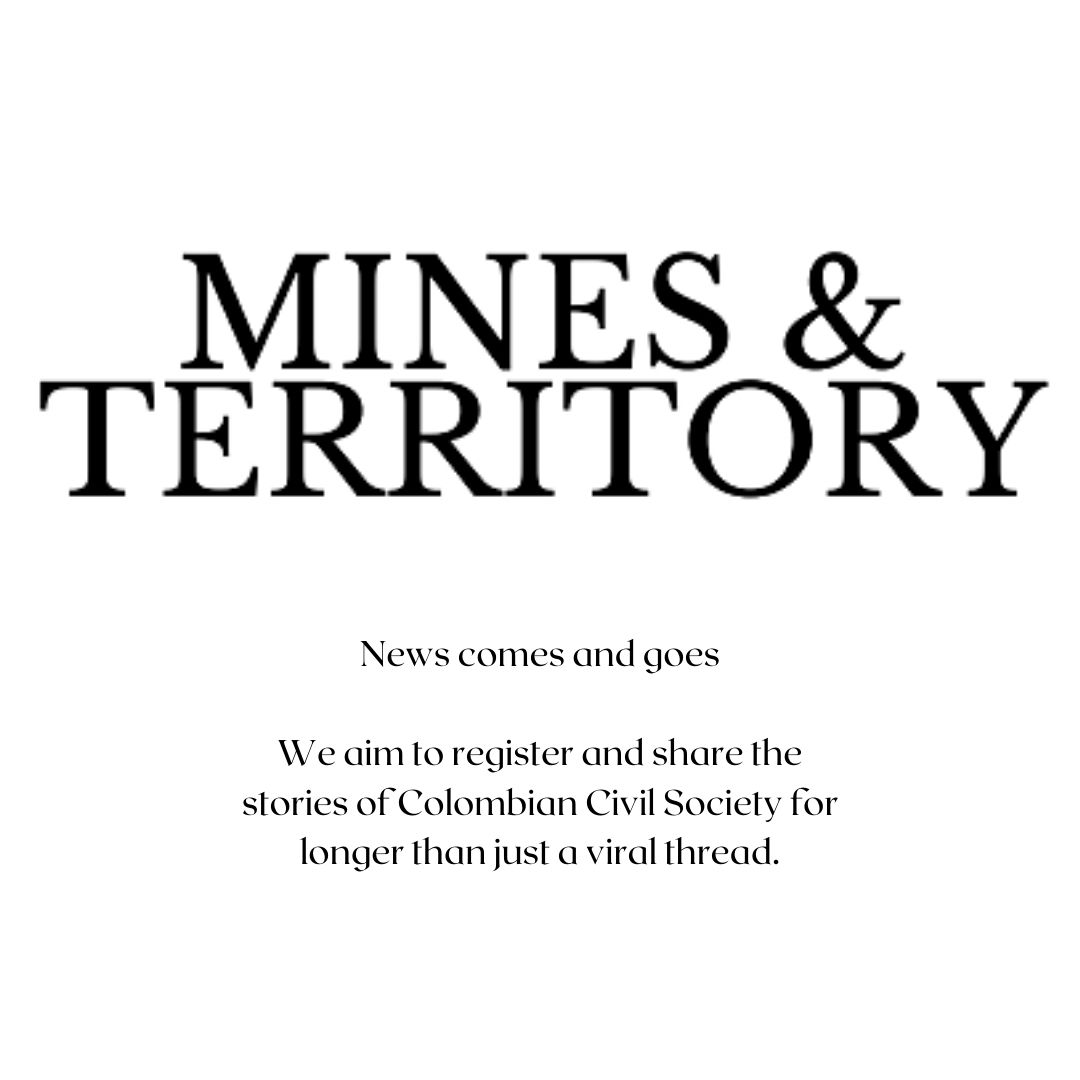10 Ways CATAPA Took on the Mining Industry in 2020
10 Ways CATAPA Took on the Mining Industry in 2020
Its been a challenging year across the world with the Covid-19 pandemic not least for communities facing down mining projects trying to exploit the situation we now find ourselves in.
Despite these new challenges here are 10 Ways CATAPA Took on the Mining Industry in 2020:
1. Uncovering the exploitation of Bolivian miners in European supply chains
In 2020 CATAPA produced a research article uncovering how the rare metal Indium exchanges hands without being paid for, as it travels through the supply chain, from Bolivian mines into the hands of European Industry. This followed up the first investigation on polymetal mining in Bolivia earlier in 2020 which assessed the impacts of mining in the region of Oruro. The research mapped the local and regional actors involved in the Bolivian supply chain, to better understand what “Making ICT Fair” could look like in a Bolivian context.
2. Supporting the #WhoIsKillingThem Campaign
Colombia is the most dangerous region worldwide for people defending the environment. This is why CATAPA, led by CATAPA Colombia activists launched the campaign called #WhoIsKillingThem to raise awareness about the impacts of mining and the increasing number of environmental and social activists being assassinated in Colombia.
3. Empowering Water Guardians in Peru
The ‘Guardianxs del Agua’ project involved providing water monitoring training to 5 local ‘water committees’, whose fresh water sources are in danger from current and potential mining projects in Cajarmarca, Peru. The series of workshops and trainings provided the “Guardians of Water” with the capabilities to better identify any signs of contamination and document the quality and quantity of local water supplies.
A social media campaign called “Guardianxs del Agua”, drew attention to the work of the water monitoring committees and the importance of protecting these last sources of clean water. The campaign also raised national attention around a new law proposal, which would protect environmental committees. The project and campaign ended with the publication of a short documentary Guardianxs del Agua.
4. Hosting an International Webinar Series on sustainable and responsible electronic supply chains
In 2017, eleven European partners joined forces to create the project “Make ICT Fair – Reforming manufacture and minerals supply chains through policy, finance and public procurement”. Organized by CATAPA, the Make ICT Fair international webinar series drew hundreds of participants from multiple continents with the aim to improve the lives of workers and local communities impacted along the ICT supply chain through research, capacity building and campaigning.
5. Adapting mining activism during a Pandemic
CATAPA’s largest annual event, the Open Min(e)d Speakers Tour, included guest speakers from Hong Kong, Ecuador and Colombia before being moved online by the start of the pandemic. 2020’s changemaker trajectory saw 30 changemakers complete our tailed programme on Extractivism, Degrowth and Buen Vivir with various trainings, including on how to run impactful social media campaigns.
Partnering with universities Catapistas gave lectures to students on issues such as resource conflicts and human rights violations in Latin America. Every year CATAPA supervises several students writing their thesis about mining related issues & ICT procurement and ‘Thesis 4 Bolivia” provided a space for graduates and researchers to share their experiences of conducting research abroad.
2020 also brought new opportunities as CATAPA delved into the world of Deep Sea Mining with a webinar and the formation of an action group. Once the first wave subsided, covid safe Summer’s End Sessions were created, allowing the Catapistas to further build and develop the movements strategy for 2021.
CATAPA put on Doculatino and Cinema Peru, an online series of film screenings which highlighted the stories of the featured communities impacted by extractive industries. Bar Circular saw hundreds tune into a series of ICT workshops taking place online, covering topics on digital health, repair and how to extend the lifespan of your digital devices.
6. Challenging the European Commission’s Green Mining Agenda
CATAPA joined over 230 civil society organisations, community platforms and academics in releasing an open letter to call on the European Commission to urgently reassess its plans to drive a new resource grab both in the EU and the global South.
Instead of expanding and repatriating mining destruction which will threaten communities, biodiversity & the planetary life support systems – we called for:
1. Absolute reduction of resource use and demand in Europe
2. Recognition and respect for communities’ Right to Say No to mining
3. Enforcement of existing EU environmental law and respect for conservation areas
4. An end to exploitation of Global South nations, and respect for human rights
5. Protection of ‘ new frontiers’ – like the deep sea- from mining.
7. Raising the profile of ‘El Tingo’
The community of El Tingo is one of the most affected by mining in Cajamarca (Peru), as the community is located between two mining projects. Despite mining companies Gold Fields and Coimolache signing social agreements with the community, the mining projects brought the community water contamination, loss of agriculture and livestock, property destruction, heavy metals in the blood of the community members and empty promises of work in the mines.
In 2020 the community of El Tingo decided to speak out. This project resulted in the powerful documentary ‘El Tingo: una comunidad bajo dos proyectos mineros’ and has been viewed over 22,000 times to date.
8. Securing recognized Socio-Cultural Status
We secured social-cultural organizational status, allowing us to increase the number of paid staff we have and finance more exciting projects and initiatives from 2021 onwards. This was really important to secure structural funding especially in the current economic context – allowing us to carry on fighting for a socially and ecologically just planet.
9. Piloting worker led monitoring of the mining industry
CATAPA entered into a new partnership in 2020, which will see the extension of worker-driven monitoring of mining operations across three continents. CATAPA supported the delivery of monitoring trainings with Electronics Watch and CISEP to start building the local foundations needed to begin the monitoring of Bolivian Tin mines. The end goal of worker driven monitoring of these mines, will be an important step-change in the transparency of these global supply chains.
10. Encouraging Public and Private bodies to clean up their ICT
The links between mining and ICT products are clear. The average smartphone contains 60 different elements, many of which are metals. Without the extraction of metals many of the technologies used in offices across Belgium would not exist. This year the Fair ICT Flanders project set up a learning network with 30 large buyers of ICT hardware and actively supported 6 pilot organisations in Flanders to make their purchasing policies more sustainable. The first Fair ICT Award was given to the KU Leuven. They were recognized for their commitment to ‘ Human Rights Due Diligence’ and life extension of their ICT devices. In this way, they hold the ICT industry accountable and contribute to less (over)consumption and mining.’














